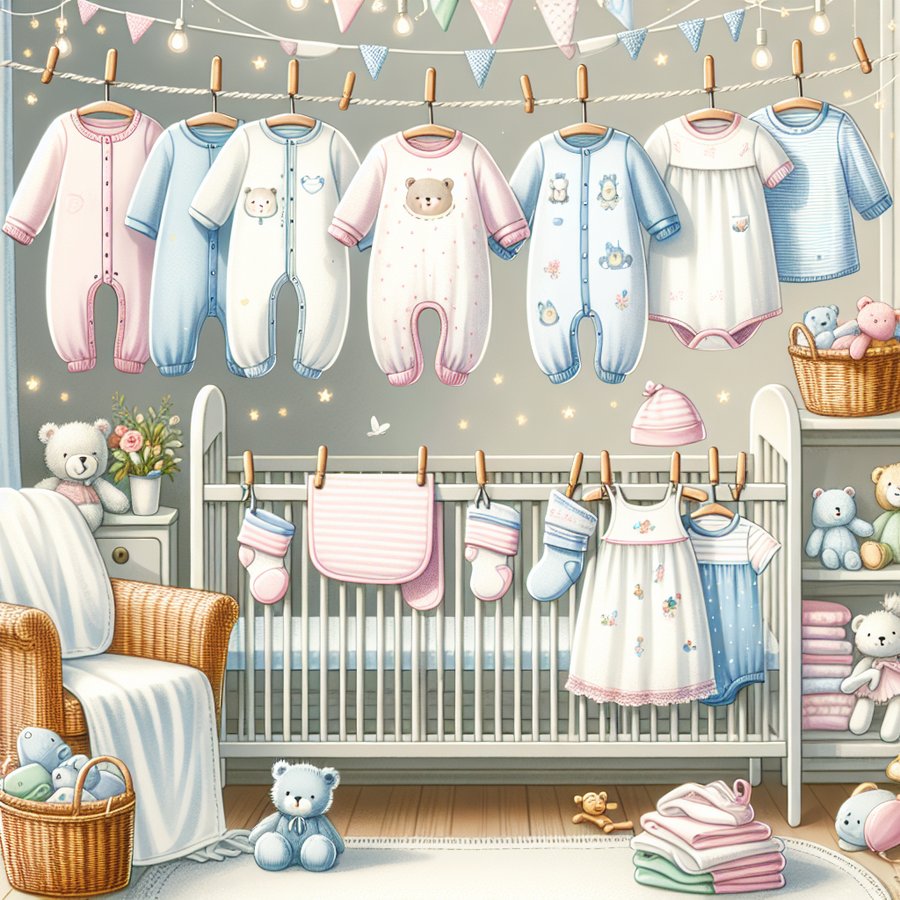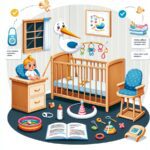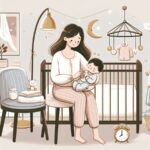Ensuring your baby is comfortable and safe throughout the night begins with making the right choices in sleepwear. Safe sleepwear choices for babies are not just about cute designs; they’re about ensuring your little one’s sleep is as safe and restful as possible. In this article, we delve into the essential aspects of selecting proper sleepwear for babies, considering factors like material, fit, and safety standards.
Understanding the Basics of Baby Sleepwear Safety
The quest for safe sleepwear choices for babies begins with understanding the basics of what makes clothing safe for sleep. The primary concern is the risk of overheating and the potential for sleepwear to contribute to sudden infant death syndrome (SIDS). According to the American Academy of Pediatrics, babies should be dressed in no more than one additional layer than an adult would use to be comfortable in the same environment. Additionally, the material of the sleepwear is crucial; it should be breathable and capable of wicking away moisture to keep your baby at a comfortable temperature throughout the night.
Another critical aspect of sleepwear safety is the fit of the garment. Too loose clothing can pose a risk of covering a baby’s face and interfering with breathing, while too tight clothing can restrict movement and lead to discomfort or even overheating. The Consumer Product Safety Commission (CPSC) provides guidelines for safe sleepwear, including specifications for snug-fitting standards to prevent fire risks. It’s essential to choose sleepwear that adheres to these guidelines to ensure your baby’s safety throughout the night.
Safe Sleepwear Choices for Babies
When it comes to selecting the right sleepwear for your baby, there are several key factors to consider. First and foremost, the material of the sleepwear should be soft, breathable, and free of any harsh chemicals or dyes that could irritate your baby’s sensitive skin. Natural fibers like cotton and bamboo are excellent choices, as they are not only gentle on the skin but also excellent at regulating temperature, ensuring your baby stays cool in the summer and warm in the winter.
Another important factor is the design of the sleepwear. Sleepsacks, for example, are a popular option for infants as they eliminate the need for loose blankets in the crib, which can increase the risk of SIDS. For older babies, consider two-piece pajama sets that are snug-fitting to comply with safety standards while providing enough flexibility for your baby to move freely. Remember to also look for sleepwear with easy-access features for diaper changes, such as snap closures or zippers, which can make nighttime changes less disruptive for both you and your baby.
Seasonal Considerations for Baby Sleepwear
As seasons change, so should your approach to selecting your baby’s sleepwear. In the warmer months, opt for lightweight and breathable fabrics that allow air circulation to prevent overheating. Short-sleeved bodysuits or even just a diaper paired with a lightweight sleep sack can be perfect for hot summer nights. On the other hand, during the cooler months, you’ll want to choose warmer materials like fleece or thicker cotton. However, it’s crucial to avoid overdressing your baby; instead, layer appropriately and consider using a warmer sleep sack or swaddle that can be easily removed if your baby appears to be getting too warm.
To keep your baby’s sleep environment safe and comfortable, pairing the right sleepwear with a well-considered nursery setup is beneficial. Ensuring the room is at an ideal temperature and using tools like white noise machines can complement your sleepwear choices, creating the optimal conditions for your baby’s rest. Furthermore, familiarizing yourself with safe sleep positioning and incorporating safe co-sleeping practices if you choose to co-sleep are crucial steps in ensuring your baby’s safety through the night.
Making informed choices about your baby’s sleepwear is a significant step towards ensuring their safety and comfort throughout the night. By understanding the basics of safe sleepwear, considering material, fit, and design, and adapting to seasonal changes, you can create a cozy and secure sleeping environment for your little one. Always remember to check for any recalls or safety alerts related to baby sleepwear and to replace any items that show signs of wear and tear to maintain the highest safety standards.
As you consider the best sleepwear options for your baby, exploring additional resources on baby sleep can be incredibly beneficial. From establishing a sleep schedule for a newborn to understanding the benefits of daytime naps, empowering yourself with knowledge will ensure you’re making the safest and most comfortable choices for your baby’s sleep. Remember, every baby is unique, and what works best may vary; always trust your instincts and consult with your pediatrician if you have concerns about your baby’s sleepwear or sleep environment.













